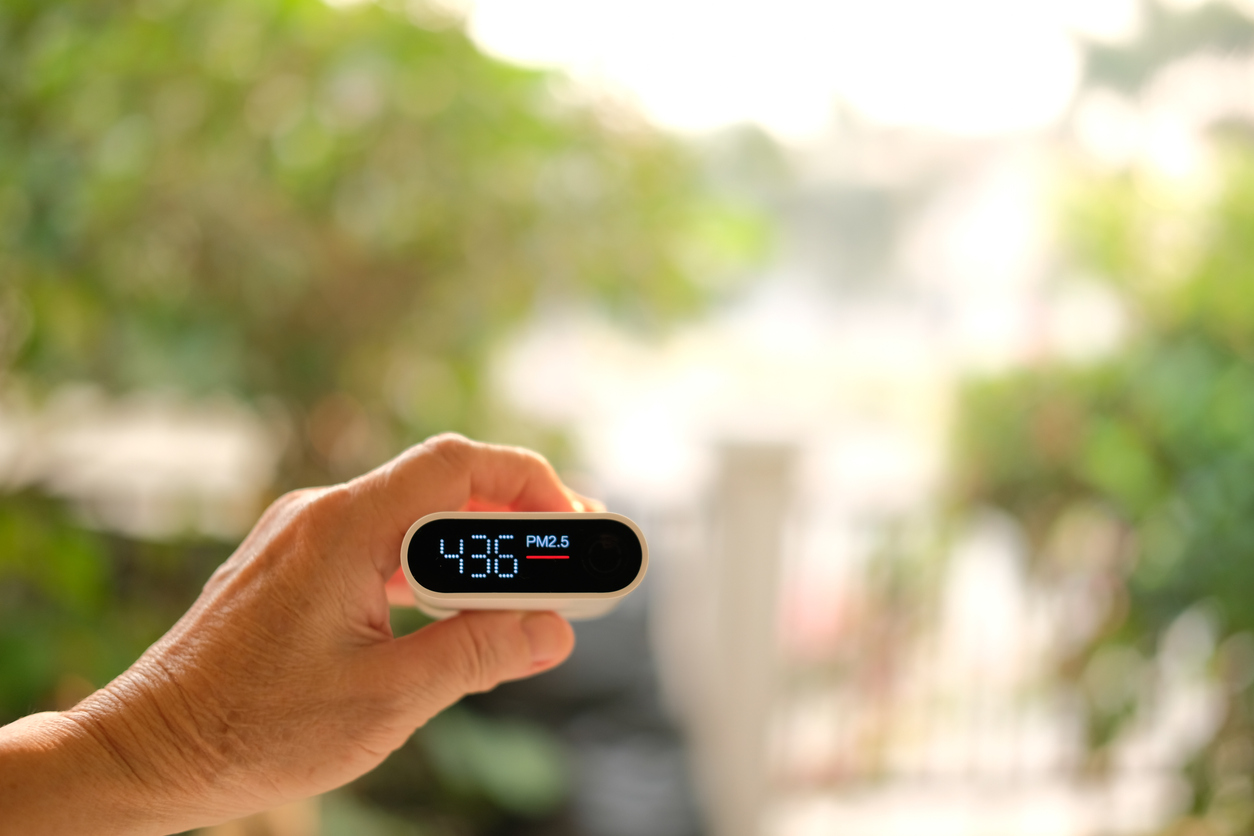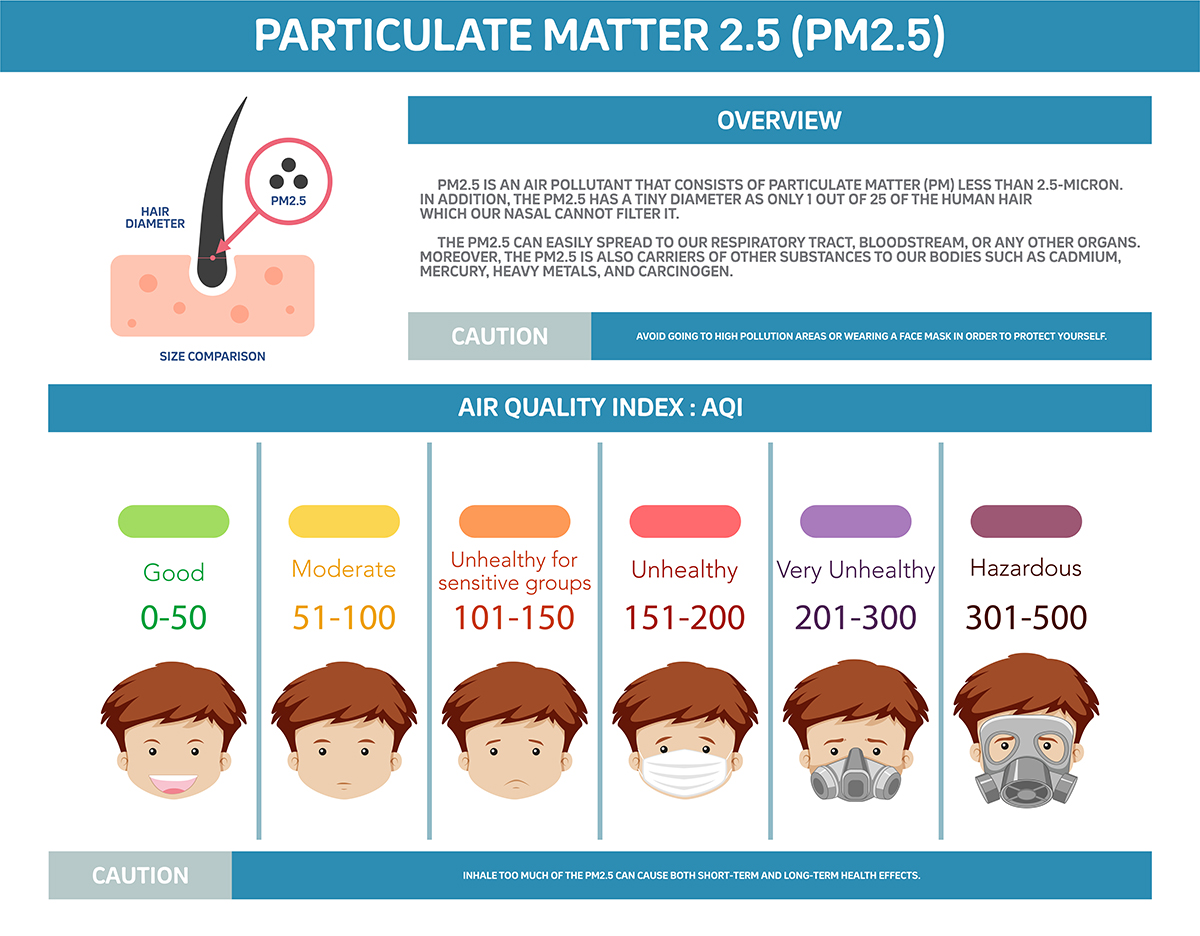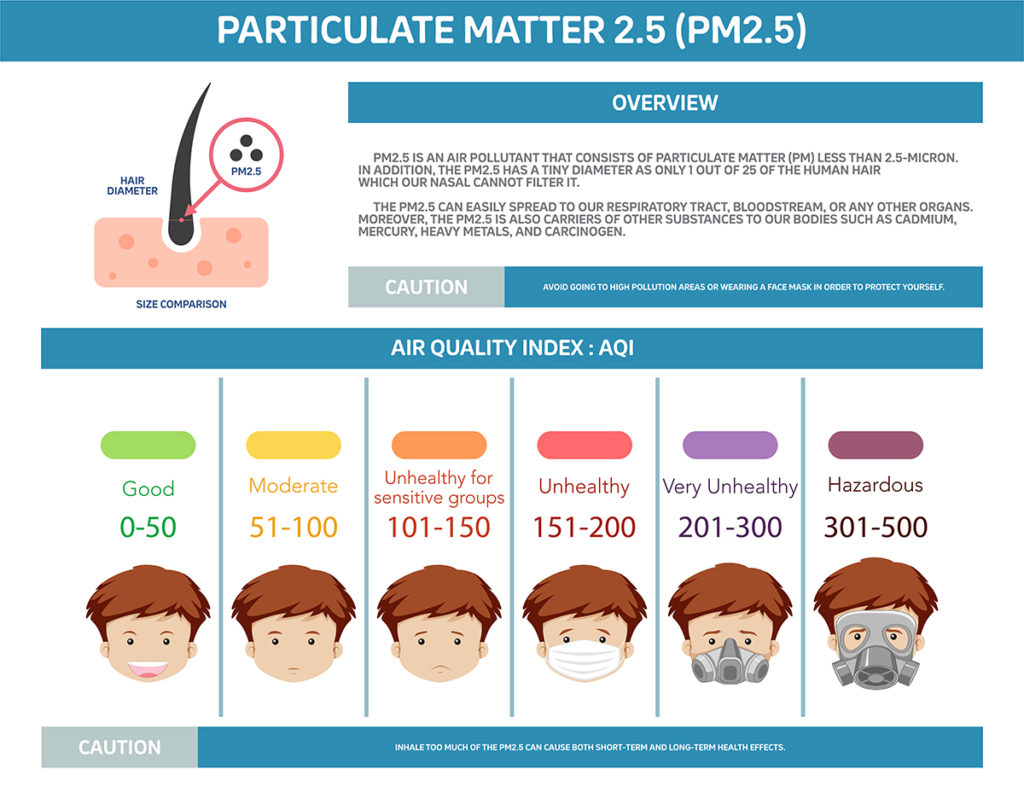
Air Quality Index or AQI is the EPA’s (Environmental Protection Agency) method for reporting air quality. This system gauges the level of pollution in the air. Think of the system as a yardstick that ranges from 0 to 500. The higher the AQI number, the greater level of air pollution and the greater the health concern. These numbers are represented by six colors as well. The AQI range 0-50 is green and represents good air quality, while an AQI value of 300 is purple represents very unhealthy air quality.


When it comes to determining AQI, there are five pollutants taken into consideration. These include:
The EPA works to determine these breakpoints to control national air pollution. View the breakpoints here.
Better understanding AQI can help you determine what air purifier suits your needs. MatrixAir systems are proven to eliminate harmful air quality, keeping any space protected. Need assistance finding the right air filtration system for your space? Call us at (603) 863-7553 or contact us now.
